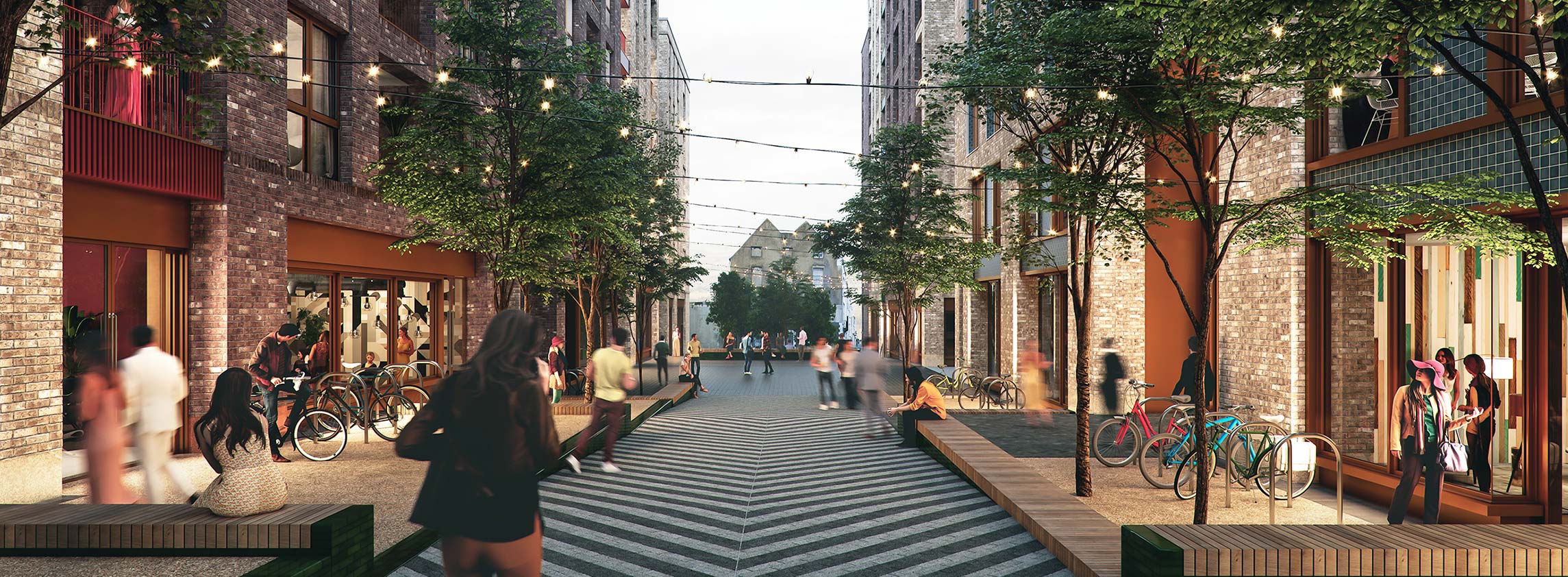Build to Rent’s resilient performance through 2020 continues to attract new investors, which is putting downward pressure on yields
Yield compression
Downward pressure on yields from new investors entering the market…
The strong performance of the sector over the past 18 months has further burnished its counter-cyclical credentials, driving increased investor appetite and a wave of new entrants.
In recent years, prime Build to Rent (BtR) yields have remained broadly stable. In spite of the economic headwinds through 2020 and early 2021, the sector delivered resilient income returns. High occupancy levels and rent collection have supported pricing. But there are signs that we are on the cusp of yield compression in the sector.
This year began with Goldman Sachs making their debut, acquiring the Thistle Portfolio. This has been followed in recent months by Heimstaden Bostad’s debut in Birmingham and Macquarie Bank launching their own platform, Goodstone.
We expect this increased competition from investors to put downward pressure on yields for the best assets. This will especially be the case for income-producing, stabilised assets. A common theme over recent years has been a lack of these opportunities. When they do come to market they attract significant competition, as evidenced by the Thistle Portfolio.
Investor demand is driving down yields
Looking to other parts of UK real estate, in particular industrial, shows how strong investor demand and positive sentiment has driven yield compression. Yields for prime distribution and multi-let estates have been falling since 2016 and are now both at 3.5%, a drop of 100 bps and 75 bps respectively over the past year alone. As a result, prime industrial assets now attract the same yield as a prime London BtR asset. In 2016, industrial yields were 100–125 bps higher than London BtR.
Strong investor appetite and competition has driven down residential yields across other European markets. Berlin has seen prime yields fall by 40 bps over the past 12 months, while Stockholm is down by 55 bps to 3.25%. This means only Warsaw and Dublin have higher prime yields than London.
Corporate debt rates had previously put a floor under yields
During 2017 and early 2018, a rise in corporate debt rates reduced the spread of BtR yields in London from c.80 bps to c.20 bps. This level became the new normal throughout 2018 and 2019. As a result, the scope for yield compression was significantly reduced, given the additional risk of investing in residential.
But there has recently been a significant fall in corporate debt rates, which have dropped by 66 bps between Q1 2020 and Q2 2021. This means that the spread to prime BtR yields has increased to its highest level in over six years, creating room for yield compression.
The economy will be a fundamental driver
As with many things, the direction of travel will be influenced by the UK economy and how it emerges from the pandemic. Recent economic data points towards a steady recovery through 2021, with the jobs market emerging with less damage than feared 12 months ago. This should support wage growth as the economy reopens, in turn, underpinning potential for rental growth.
The house price growth seen over the past few months will also put the aspiration of homeownership further out of reach for many would-be first-time buyers – driving demand for rental product.
The potential fly in the ointment is inflation. At present, forecasts are for the current strong inflation to be temporary. But, if it turns out to be persistent, then the Bank of England will have to act, leading to a rise in bond yields. This will put upward pressure on yields across real estate.
But as BtR continues to mature as an asset class, we expect greater liquidity and economies of scale will put downward pressure on the sector’s risk premium. This means that even if yields don’t fall, they will likely remain stable even as the risk-free rate rises.
Scale in UK BtR
Sigma recently announced the delivery of the 4,000th home for the PRS REIT, meaning they have one of the largest operational BtR portfolios in the UK, alongside Grainger (c.6,350 units).
Whilst impressive in terms of scale in the UK context, as we highlighted in our report in December 2020 (Spotlight: The UK Private Rented Sector), these pale in comparison to the size of the largest investors in more mature markets. Germany and the USA, for example, both have investors with over 100,000 units.
The differences in the size and structure of rental markets in these countries mean that we can’t take as a given that we will see portfolios this large in the UK. But looking at the proportion of rental stock controlled by these investors can still provide an indication as to what scale could really look like in the UK.
Evidence of localised concentration
Furthermore, there is evidence of investors in other markets being comfortable with pockets of high concentration. In both Germany and the Netherlands, there are a number of cities where investors control over 3% of rental stock. For example, Vesteda owns 3.1% of all rental homes in Amsterdam and Deutsche Wohnen owns 3.4% of stock in Frankfurt.
By contrast, in the UK, the largest landlords in London, L&Q and Quintain, only control 0.2% and 0.3% of rental stock respectively. Even looking at their entire pipeline this only rises to 0.5%. If they were to reach a similar proportion of stock as seen in Germany and Holland, their portfolios would be over 30,000 homes in London alone.
But a need for a diverse product offering
The evidence from mature markets elsewhere overwhelmingly indicates that the UK has not got close to its potential in terms of scale. But to do this, investors will need to ensure their portfolios provide a mixed offering of single and multifamily homes, catering to different tenant groups and across the affordability spectrum.
